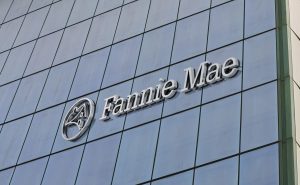 Since re-launching its equity investments in the Low-Income Housing Tax Credit (LIHTC) market in 2018, Fannie Mae has supported the creation or preservation of rental housing units in communities throughout the country, providing critical access to affordable housing and supportive services for thousands of households in the U.S. and its territories.
Since re-launching its equity investments in the Low-Income Housing Tax Credit (LIHTC) market in 2018, Fannie Mae has supported the creation or preservation of rental housing units in communities throughout the country, providing critical access to affordable housing and supportive services for thousands of households in the U.S. and its territories.
The company’s LIHTC investments continue to expand access to affordable housing supply when and where those needs are greatest, with a focus on underserved markets, populations with unmet needs, supportive housing developments, and disaster-impacted areas.
“LIHTC investment is a proven and effective way to create and preserve affordable housing supply for low- and very-low-income families, particularly in underserved markets. Fannie Mae continues to take full advantage of the LIHTC program’s opportunity to fulfill our mission, while leading the market in serving those who need assistance most,” said Dana Brown, VP, Multifamily Customer Engagement, Fannie Mae. “Increasing our annual LIHTC investment cap in 2021 from $500 million to $850 million, under the guidance of the Federal Housing Finance Agency, has enabled us to inject more equity support into affordable housing, providing greater access not only to affordable rental housing but also high-impact supportive services for residents, such as on-site job training, counseling services, and after-school programs. We look forward to continuing to work alongside our LIHTC market partners, who share in our commitment to address the nation’s affordable housing supply crisis, as a reliable source of capital for these crucial investments.”
The government’s LIHTC program incentivizes private equity investments to support affordable rental housing for low- and very-low-income households by awarding tax credits to affordable housing developers, who exchange those tax credits with corporate investors in return for capital contributions for affordable multifamily rental housing. Most LIHTC investors participate to meet goals established by the Community Reinvestment Act, while the rest operate out of pure economic interest. Fannie Mae doesn’t fit into either of these categories, which makes the GSE unique as an investor in the LIHTC market. Instead, in furtherance of its mission to facilitate equitable and sustainable access to quality affordable rental housing, Fannie Mae focuses on investing in underserved markets and properties.
Since returning to the LIHTC market in 2018, Fannie Mae has:
- Committed approximately $3.2 billion in net equity to LIHTC investments
- Invested in more than 1,000 LIHTC equity properties, including 90 located in high-needs rural regions
- Committed to investments in 49 of 50 states, in addition to Washington, D.C.; Guam; Puerto Rico; and the U.S. Virgin Islands
Currently, LIHTC finances the construction and rehabilitation of nearly all subsidized housing in the U.S. Approximately 90,000 apartment units are built each year using LIHTC, enabling thousands of people in America to find affordable rental housing. Fannie Mae’s LIHTC equity contributions have supported necessary housing for those in significant need, including Native American and rural communities, as well as areas affected by natural disasters.
Since 2022, Fannie Mae has invested millions in LIHTC properties, including:
- $13.5 million at 3300 Caroline in Houston, Texas, which supplies housing for families, the homeless, veterans, those with special needs, and victims of domestic violence
- $9.5 million at Lac Courte Oreilles Homes V in Hayward, Wisconsin, which serves primarily Native American residents and offers supportive services for veterans in this rural community
- $25 million at the Olive Ranch Apartments in Oroville, California, which has delivered housing for families following the 2018 Camp Fire wildfire
- $6.5 million at Tranquility at Griffin Apartments near Atlanta, which provides family housing units affordable at 60% of area median income, with units set aside for persons with hearing, visual, and mobility impairments
- $20 million at Pride Place in Seattle, which makes safe housing available for LGBTQ seniors
- $51.5 million at the 7th and Brannon complex in San Francisco, which provides housing for families and the homeless and comprehensive case management services for tenants who suffer from homelessness and mental illness
- $75 million at the Summer Breeze, Summer Vista Barrigada, and Dededo Village in Dededo, Guam, which offers family housing and on-site tenant educational services

 theMReport.com Your trusted source for mortgage banking news
theMReport.com Your trusted source for mortgage banking news








